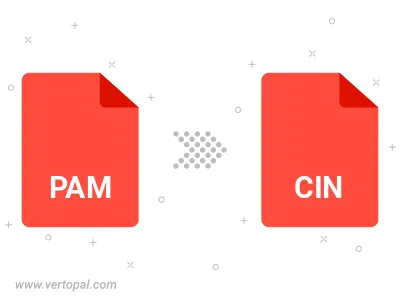Convert PAM to CIN
Convert PAM images to CIN format, edit and optimize images online and free.

The PAM (Portable Arbitrary Map) file extension is a versatile bitmap format used primarily in UNIX-based systems. It extends the Portable Any Map (PNM) format, supporting 2-dimensional image data storage in a binary format with an ASCII header. Introduced to enhance flexibility and interoperability in image processing, PAM files are utilized for various graphical applications, offering a standardized method for handling diverse image types. This format's history traces back to the need for a more adaptable and comprehensive bitmap solution within the PNM family.
The CIN file extension stands for Kodak Cineon Bitmap Image, a format developed by Kodak in 1992 to digitize film images for electronic compositing, manipulation, and enhancement. It stores a single frame from a motion picture or video data stream with 10-bit color depth per RGB channel. Although the Cineon System is now discontinued, the format is still used in visual effects and film restoration. CIN files can be opened and converted using applications like Adobe Photoshop and XnViewMP.
Choose your PAM image for uploading to our PAM converter.
Pick any PAM to CIN tools if you need to edit your PAM file, then click the Convert button.
After the convert is complete, click on the Download button to get your CIN image.

To change PAM format to CIN, upload your PAM file to proceed to the preview page. Use any available tools if you want to edit and manipulate your PAM file. Click on the convert button and wait for the convert to complete. Download the converted CIN file afterward.
Follow steps below if you have installed Vertopal CLI on your macOS system.
cd to PAM file location or include path to your input file.Follow steps below if you have installed Vertopal CLI on your Windows system.
cd to PAM file location or include path to your input file.Follow steps below if you have installed Vertopal CLI on your Linux system.
cd to PAM file location or include path to your input file.